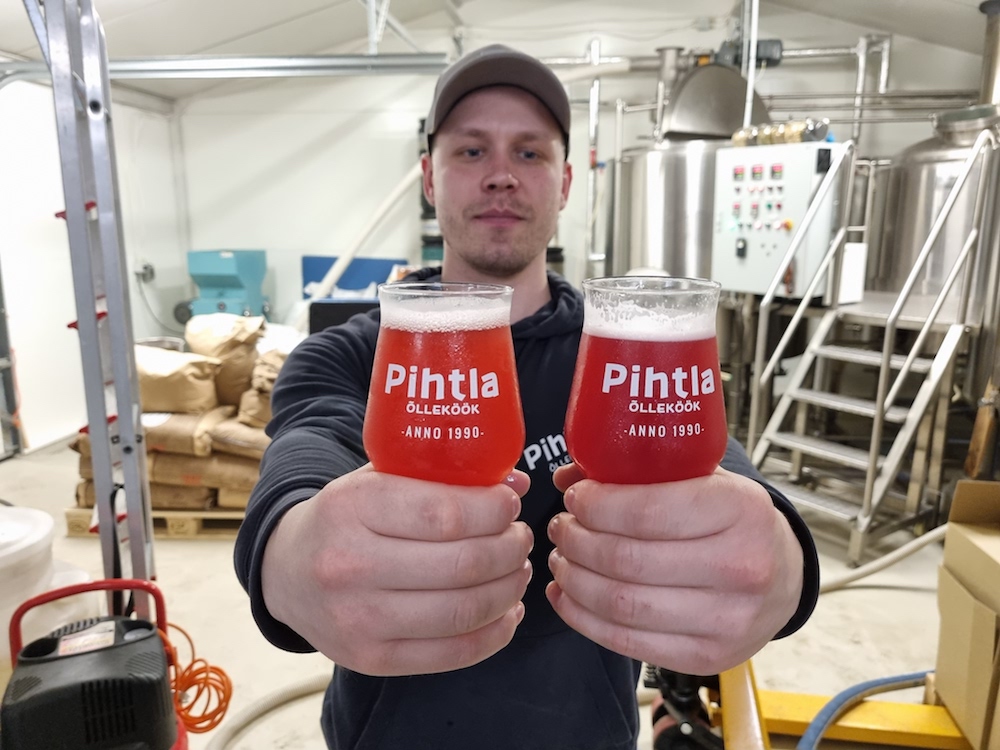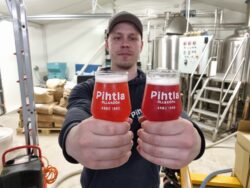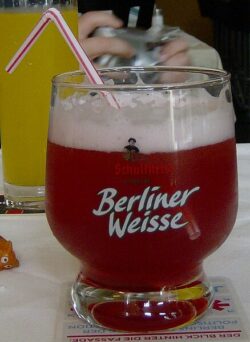
It’s raining berries
Summer is in full swing, there’s no doubt about it. While typically our summer in Estonia tends to last a week, at best two, according to statistics, the average Estonian at least manages to bring home a box or two of light lager-type beer and cools off with it. Meanwhile, bigger beer enthusiasts are likely turning their attention to some Pale Ale (such as Väike Saaremaa) or IPA (such as Kolm Venda).
However, even the best things can become monotonous at some point. Probably even the biggest meat lover can’t eat grilled meat every day during this long-lasting summer. Occasionally, something lighter is desired. ‘Light’ is the keyword for today’s post.
While in Estonia, people are clearly fans of light beer in warm weather, in a European beer hub like Belgium, for example, breweries introduce various lighter and fruitier beers for the summer. Germans, on the other hand, invented such beer already in the 16th century and proudly brew it to this day. Pihtla Brewery also has two Berliner Weisse-style light berry beers in the SADU series, following the tradition of Berlin wheat beer.

In the lilac can, there’s ‘Sõstrasadu’, and in the pink one, ‘Vaarikasadu’.
Berliner Weisse
Generally, beer historians consider a traditional but now obscure beer from Hamburg, documented by Cord Broihan in the 16th century, as the predecessor to Berliner Weisse. His refined recipe gained popularity, and in the 1640s, Dr. Elsholz began brewing the same in Berlin.
Another version of the birth story of Berliner Weisse suggests that Huguenots migrated north, bringing with them the recipes for traditional Flanders red and brown sour beers, which were brewed in Germany with available ingredients. The recipes for these beers were already known in Berlin since 1572.
However, it came to be, by the time of the Napoleonic Wars, this beer style was so well-known that French soldiers referred to it as the champagne of the north. Such recognition from citizens of the wine country can only be a good sign. A true Berliner Weisse is indeed somewhat wine-like and dry, thanks to its acidity and fruity character. But don’t be discouraged by that – we’ll explain how right away.
Decline and Rebirth

Traditional syrup and straw Weiss in Berlin
In the 19th century, at the height of beer popularity, Berlin had 700 breweries producing Weissbier. By the end of the 20th century, there were only two left, both owned by the same proprietor.
Although this beer style, like many traditional styles, was almost extinct, it came back to life with the craft beer revolution. Today, every self-respecting brewery has at least one sour wheat beer as part of its specialty brews.
Making wheat beer sour is a simple trick – lactic acid bacteria need to be added to the wort. As the usual light sour beer is somewhat unfamiliar to Estonian beer enthusiasts, we have added copious amounts of raspberries to create “Vaarikasadu” and black and red currants for “Sõstrasadu.”
Germans themselves love to make Berliner Weisse in its ‘natural’ form, as a light beer. However, it is served with syrup, whether it’s raspberry, currant, or, for example, elderberry. For those not fond of sour beers, it is also mixed with regular light lager in Berlin.
Light Summer Drink
Follow us on Facebook and Instagram. Visit us in Pihtla!
The post is written with the help of our friend and beer blogger, Karl Hallik.